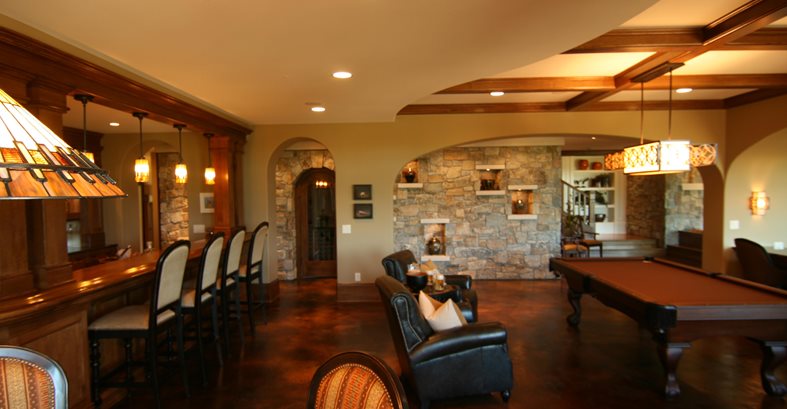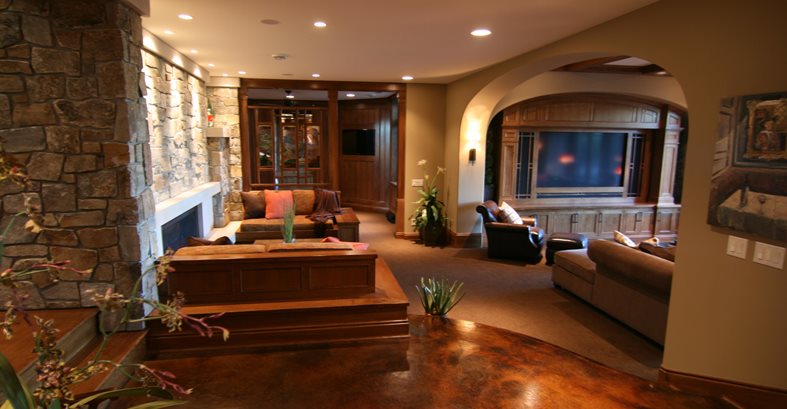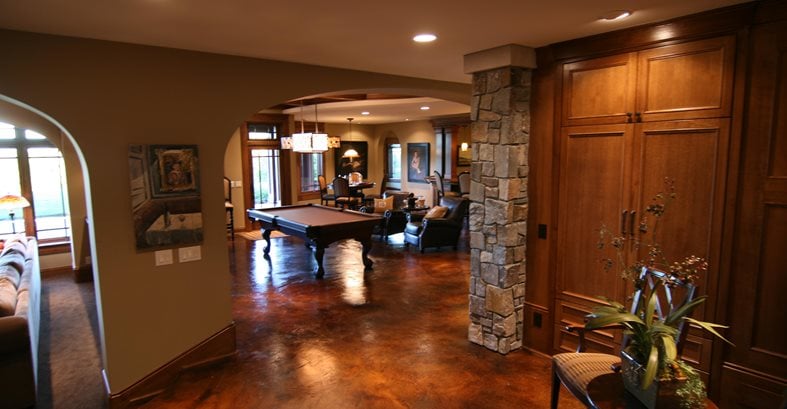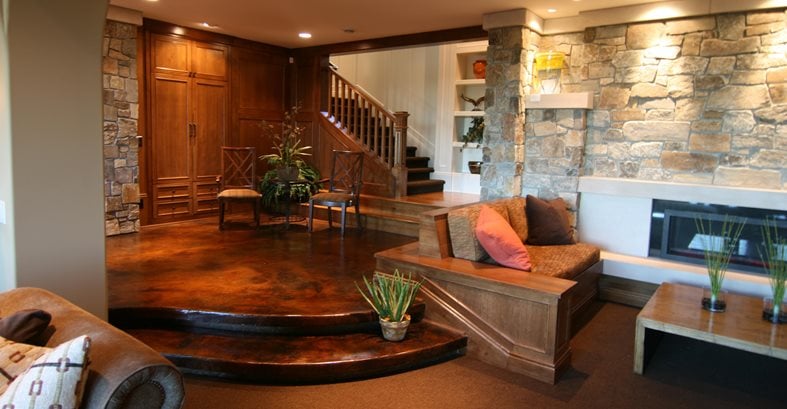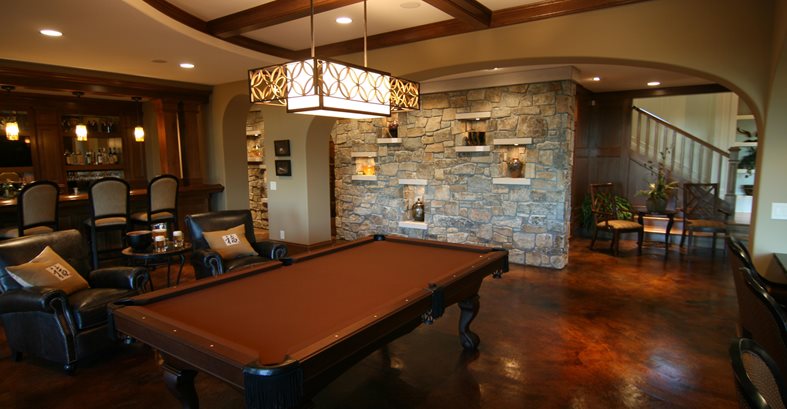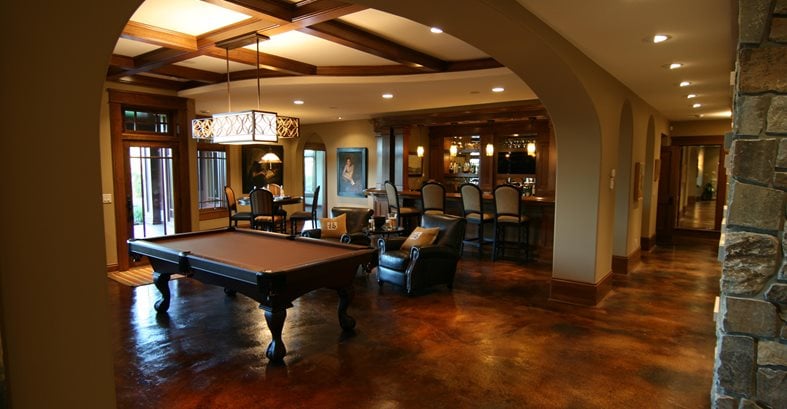The challenge
As part of a Parade of Homes tour, only the best would do for this high-end custom home built by Charles Cudd DeNovo, Plymouth, Minn. One of the challenges was to transform the 1,800-square-foot concrete slab in the lower-level bar and game room, giving it rich, warm color tones that would complement the wood-beamed ceiling and stone walls.
"Since this was a Parade Home, there was the inevitable scramble at the end to finish the job, so there were numerous trades tripping over everyone," says Mike Dougherty of Concrete Arts. Hired to resurface the floor with a stained microtopping, Concrete Arts not only had to compete with other trades, they also had to get the floor in tip-top shape for resurfacing. "Although the floor was poured approximately eight months prior to our installation, it was used and abused during the construction process. Before we applied the topping toward the end of the job, we had to grind the floors and fill in any existing cracks with a polyurea."
Design goals
"The interior designer of the home had seen a floor in a restaurant in Arizona that was old and slightly worn and wanted us to replicate this aged look using different tones and a rustic finish," says Dougherty. The designer also wanted the floor to make a seamless transition from room to room, including an entry area with curved steps leading down to the main floor. Durability was important as well, because of the heavy foot traffic expected around the billiard table.
Secrets to success
Coloration systems from Bomanite were used because of their unique tones. "We used acid stains in pine and auburn, and then we used cattail-brown acetone dye for accenting," says Dougherty.
To achieve the rustic effect the designer was after, Concrete Arts applied the microtopping by trowel and used a layering technique to apply the various stain colors. "We decided to use a very sloppy trowel technique that left chatter marks and ridges," says Dougherty. "Then we applied a base coat of acid stain, followed by a second color over that. We then used a splatter/spray technique to apply the third color."
To protect the floor and make it more resistant to foot traffic, it was sealed with a water-based acrylic followed by six coats of a matte-finish floor wax.
"Rarely do we come across a floor that we can't offer some sort of affordable finish for. Polishing seems to be the most popular option right now, but microtoppings are becoming increasingly popular," says Dougherty.
Materials and equipment used
Surface prep equipment: Floor grinding machines from HTC
Concrete microtopping: Resurfacer from Lifetime Floors
Acid stains and dye: Bomanite
Contractor
Concrete Arts, Hudson, Wis.
